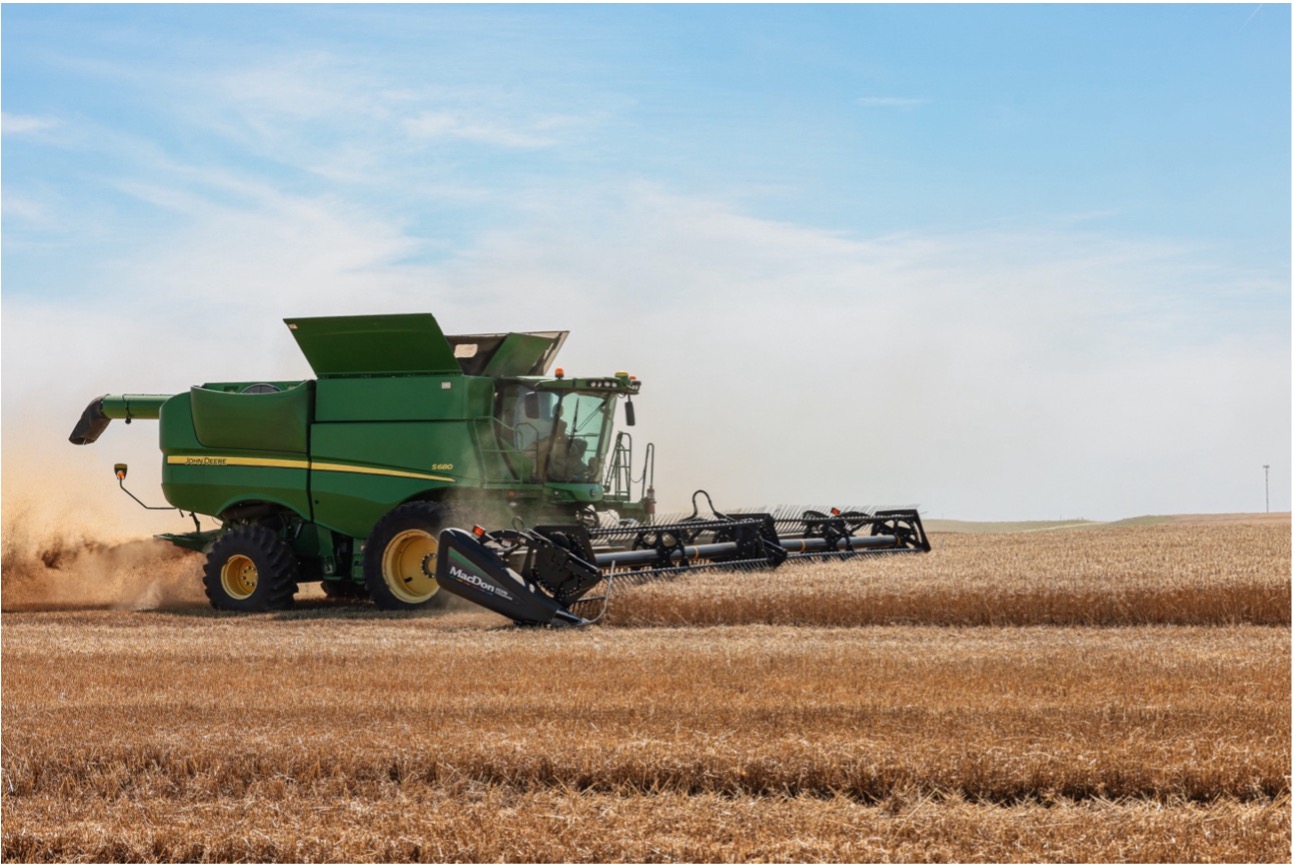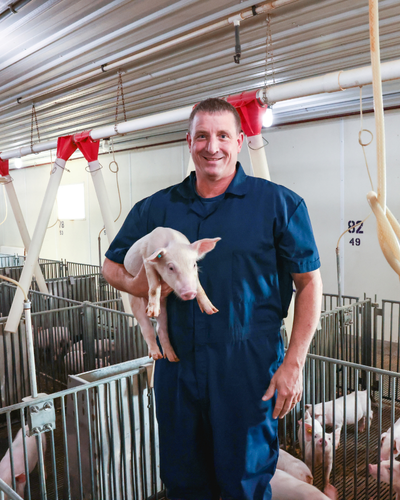
Swine Dining
Story and Photos By: Gordon Clark
Published in Spring 2025 K-State Agriculturist issue
To view the full issue, click here.

Kansas, known as the nation’s breadbasket, leads the country with more than 300 million bushels of wheat harvested annually. However, not all wheat makes it to the flour mill. When wheat is unfit for milling into flour due to low test weight or protein levels below a certain threshold, farmers are left with limited options. That’s where a Kansas State University research team, led by professor Joel DeRouchey, a professor in the animal sciences and industry department, is exploring an alternative use: feeding pigs.
EXPLORING WHEAT
When wheat is harvested, it is taken from the field to the elevator by the truckload. When these trucks arrive at the elevator, they are required to drive across a scale to determine the load’s test weight and the load is probed to determine protein content. If industry standards are not met during this process, farmers take a discount on their wheat because it is not ideal for flour millers to use. According to DeRouchey, a recent study showed this type of wheat is often associated with physical abnormalities or contamination that affect its nutritional value compared to regular wheat.
In an era where corn and soybeans dominate the livestock feeding market due to their high energy and protein contents, K-State’s swine nutrition experts are looking to wheat as a high-protein option. DeRouchey and his counterparts have come together to see how wheat measures up to traditional livestock feeds. “We haven’t done much research on wheat in pig diets for about 10 years,” DeRouchey says. “It was time to take another look.”
CEREAL GAINS
Researchers are finding that wheat isn’t just another grain; it’s a protein powerhouse. With protein levels ranging from 11% to 13%, wheat could replace expensive supplemental protein like soybeans, thus lowering feeding costs for pork producers. According to DeRouchey, wheat contains higher levels of crude protein and amino acids compared to most other cereal grains.
“When we use wheat, we can use less other protein sources, primarily soybean meal,” DeRouchey says.
Traditionally, corn has been considered the better option for providing the high caloric intake that pigs need to grow. Recent findings suggest that wheat’s energy value may be closer to corn’s than nutritionists originally thought. According to DeRouchey, recent studies that showed direct comparisons of wheat and corn suggest wheat’s mean energy content is 99% and 98% of the energy of corn for digestible energy and metabolizable energy.
“Over time, whether through genetic breeding or other factors the caloric level of wheat has improved, making it more comparable to corn,” DeRouchey says.
For the Kansas wheat farmer, the possibility of wheat in swine diets has potential upsides. Off-quality wheat could still turn a profit by feeding it to livestock, specifically pigs. This option keeps wheat in the local economy and helps farmers by offering a new and profitable solution for wheat that would otherwise be discounted by elevators based on quality.
“Livestock provide an opportunity for off-quality wheat so it’s not discarded and disposed of,” DeRouchey says.
While wheat isn’t going to dethrone corn as the lead energy source of swine diets, K-State researchers believe that with the right market conditions, it could play a bigger role in feed troughs soon. DeRouchey and his team have been evaluating data and speaking with producers to gauge when wheat makes the most sense to feed.
“We’ve certainly visited with producers who, if they have the opportunities with wheat, can evaluate the economics with our team,” DeRouchey says.
At the heart of this research is a collaboration that goes beyond feeding strategies. It’s about farmers helping farmers. By partnering with Kansas Wheat, DeRouchey and his team are tapping into a resource that benefits both crop and livestock producers alike. By using low-quality wheat, it creates a sustainable solution for the future of agriculture at home and around the globe. This partnership showcases the strength of the state’s farming community where two different sectors can work together for the good of the industry and their livelihoods.
DeRouchey says, “This partnership between Kansas Wheat, a commodity group, with a livestock focused output really allows both groups to benefit from updated timely information to get the most value out of wheat and wheat co-products.”